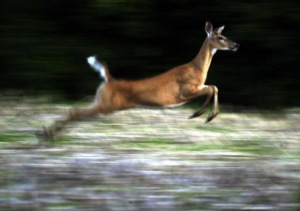The winter of 2013-2014 was unusually hard on Wisconsin deer herds. That winter deer were dying from starvation and exposure and became like the-walking-dead. The result was devastating with winter weather killed so many Deer that the Wisconsin Department of Natural Resouces recommended an a antler-less deer hunt for 2014.
Bad for deer, but good for wolves
The ying-yang effect of a bad winter for deer herds meant plenty of food for wolf pups that were born the spring of 2014. It’s tough for wolves with a wolf pup mortality rate of 40% during any given year, but with the winter deer kill in 2014 a blessing-survival for wolf pups.
Just how many deer are killed in one hunting season in Wisconsin
Data includes final deer registration records from September 12 through January 31 with a total of 309829 deer killed in the 2015-2016 Wisconsin deer hunting season.
Just what do Wisconsin gray wolves eat and how much?
“Gray wolves can survive on about 2 1/2 pounds of food per wolf per day, but they require about 7 pounds per wolf per day to reproduce successfully. The most a large gray wolf can eat at one time is about 22.5 pounds.” (source)
“Timber wolves are carnivores feeding on other animals. A study in the early 1980s showed that the diet of Wisconsin wolves was comprised of 55 percent white-tailed deer, 16 percent beavers, 10 percent snowshoe hares and 19 percent mice, squirrels, muskrats and other small mammals. Deer comprise over 80 percent of the diet much of the year, but beaver become important in spring and fall. Beavers spend a lot of time on shore in the fall and spring, cutting trees for their food supply. Since beavers are easy to catch on land, wolves eat more of them in the fall and spring than during the rest of the year. In the winter, when beavers are in their lodges or moving safely beneath the ice, wolves rely on deer and hares. Wolves’ summer diet is more diverse, including a greater variety of small mammals.” (source)
Wolves can smell disease in a deer
For centuries the wolf and the deer have relied on each other. When a wolf takes a sick deer he prevents disease from spreading in the herds. Wolves keep deer herds healthy and strong.
After Wisconsin exhausted the logging industry, they pushed for trophy hunts in the later 1800s’
Vast herds of native woodland elk, bison, antelope, and deer roamed from the southern grasslands to the northern woods of Wisconsin. These vast native herds were over hunted essentially killed off in Wisconsin.
Wisconsin deer population 2016
There are roughly 1.8 million deer in Wisconsin.
The wolf is not "killing-off" deer
“Examine each question in terms of what is ethically and esthetically right, as well as what is economically expedient. A thing is right when it tends to preserve the integrity, stability, and beauty of the biotic community. It is wrong when it tends otherwise.” The Land Ethic, ~Aldo Leopold
source




No comments:
Post a Comment